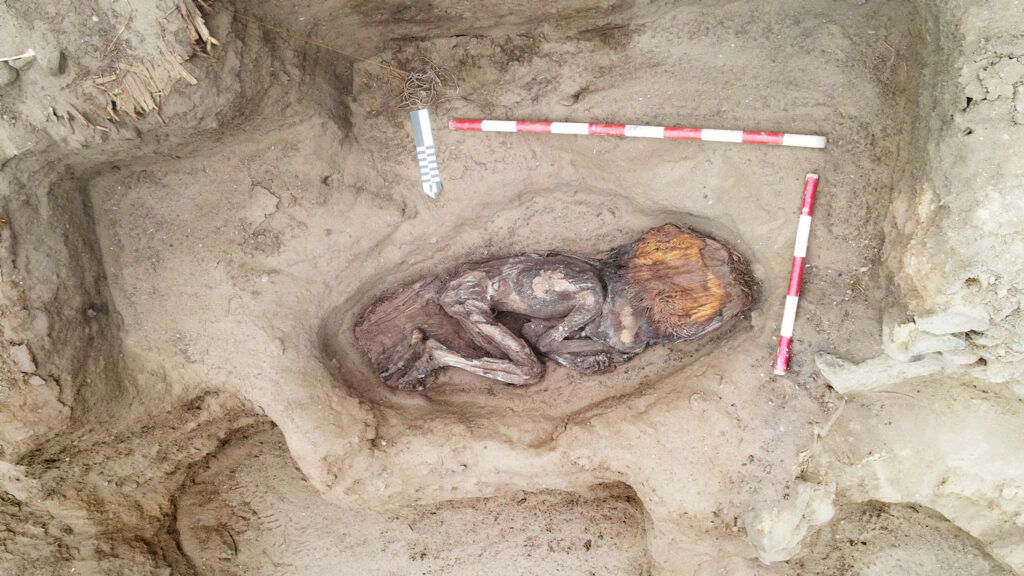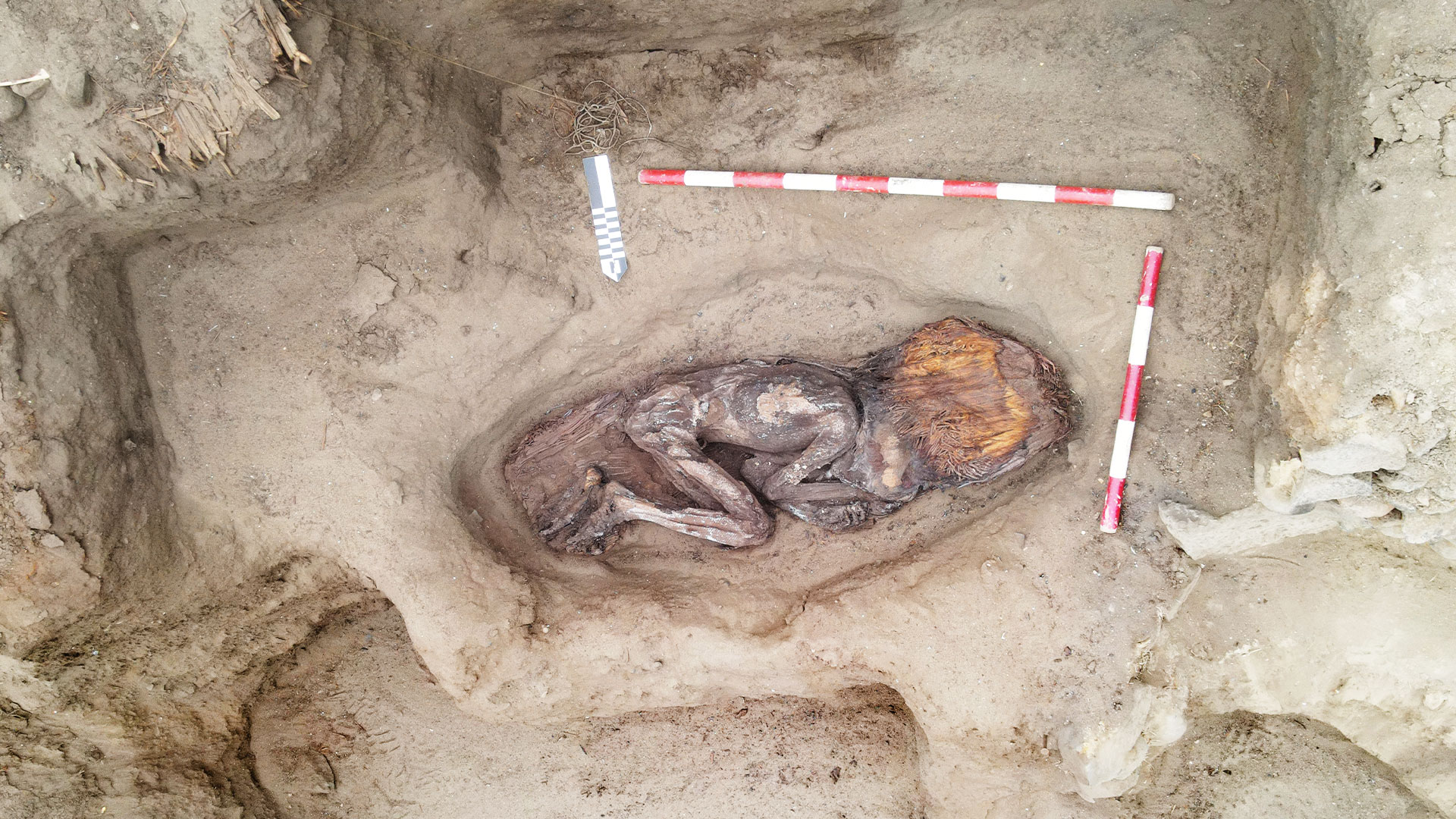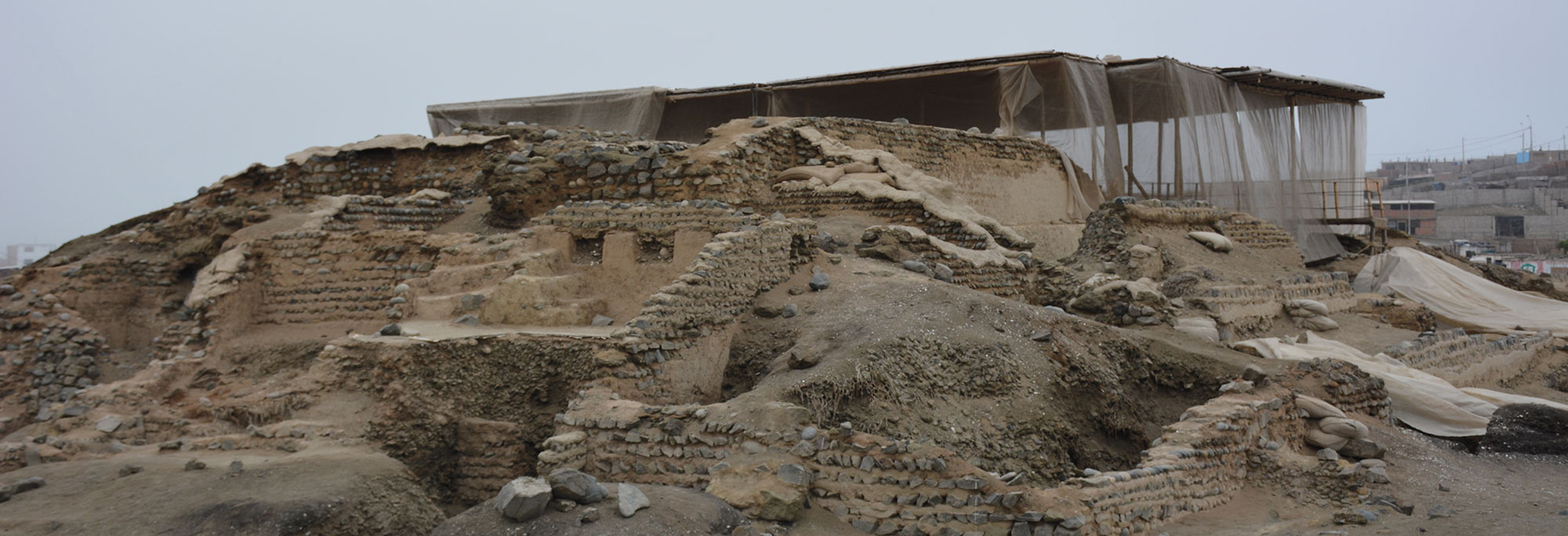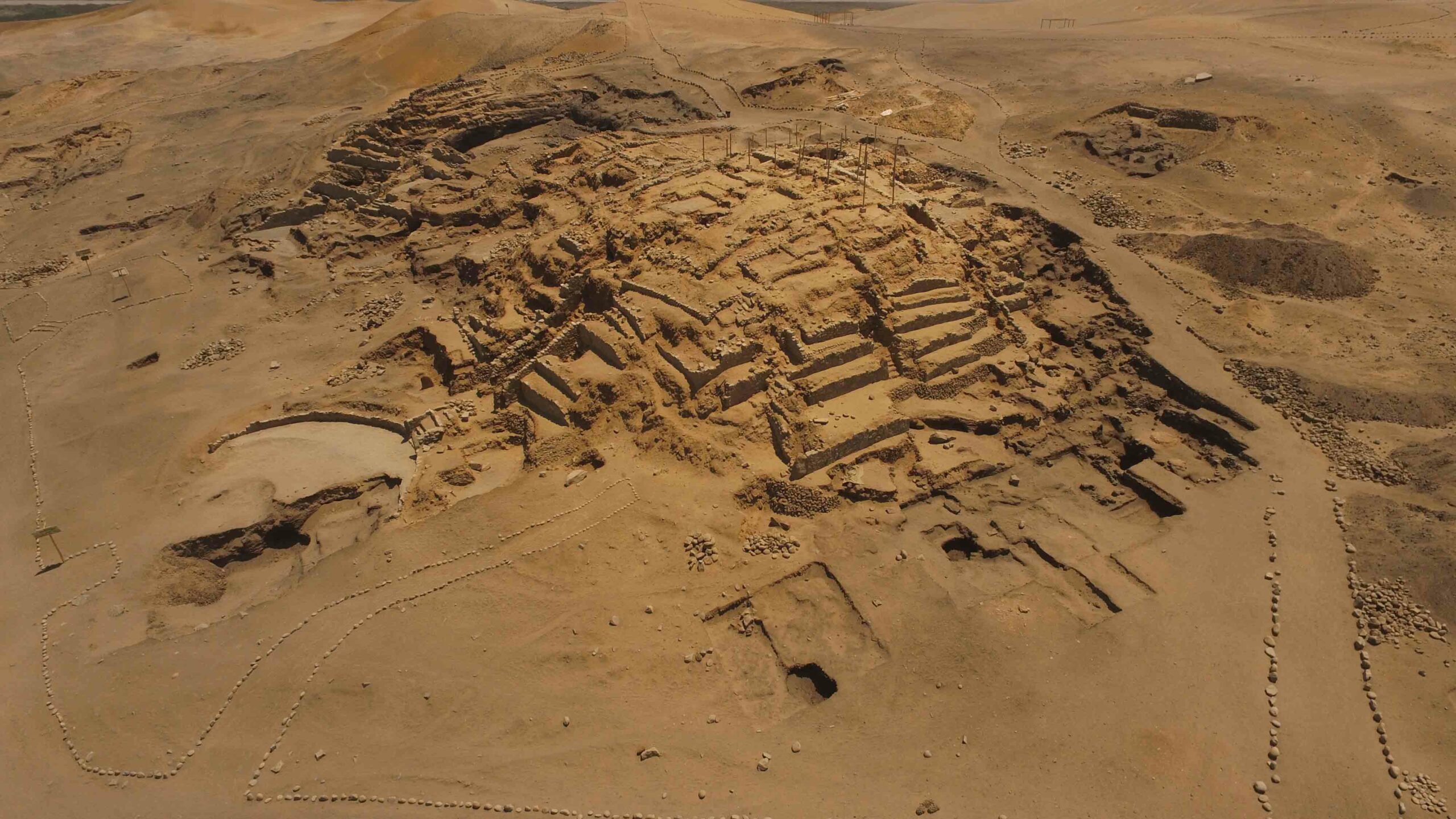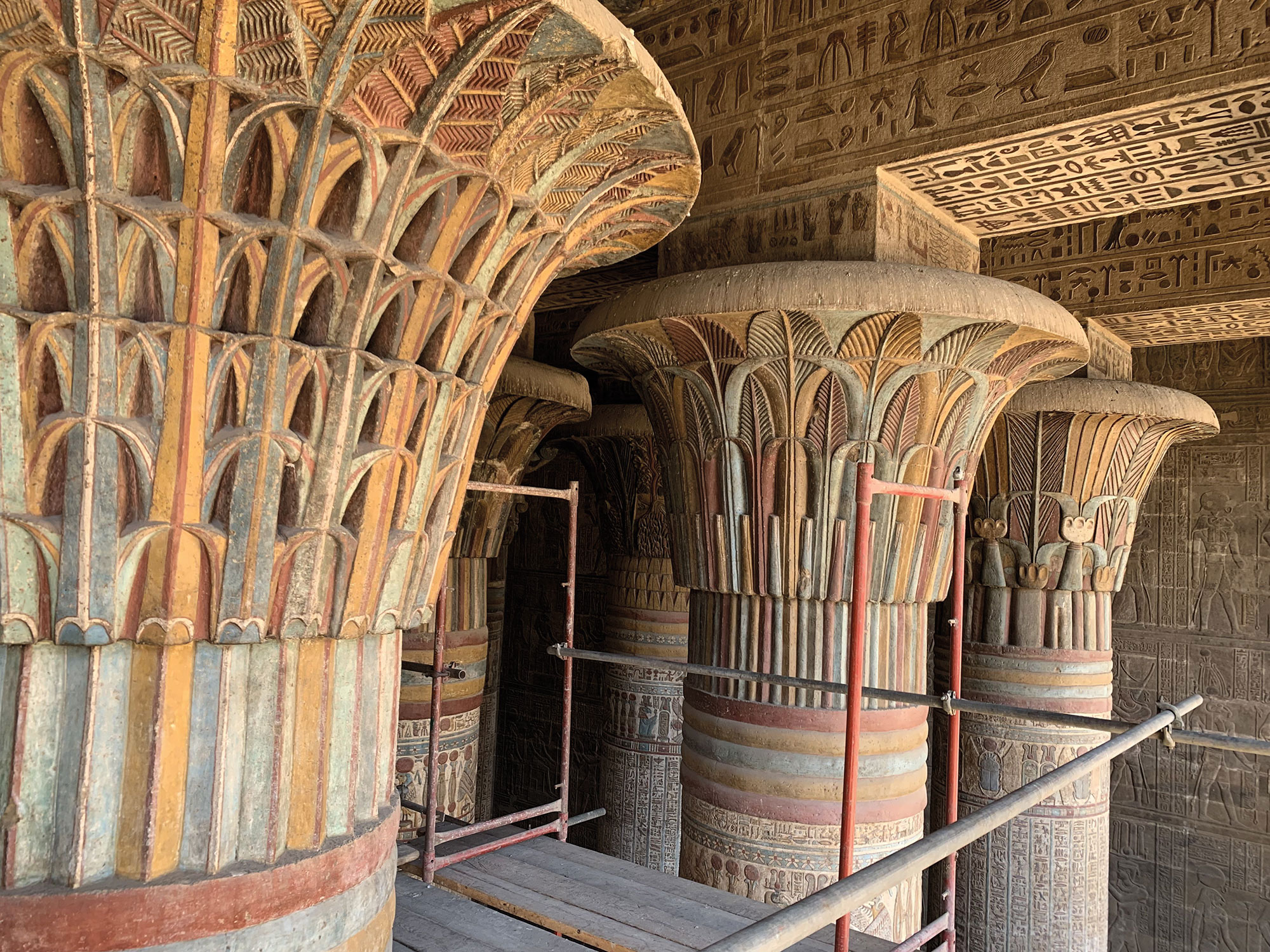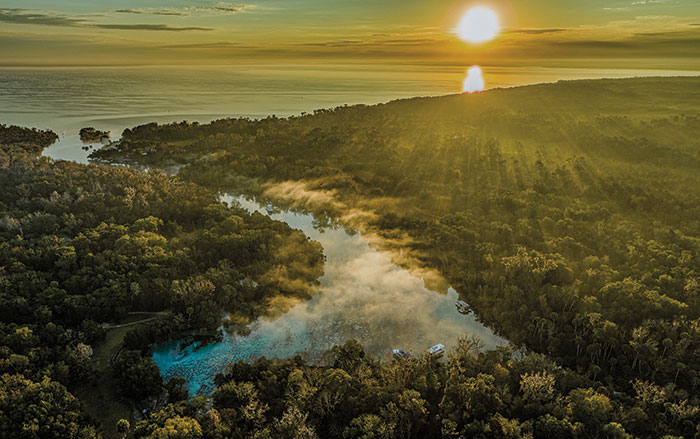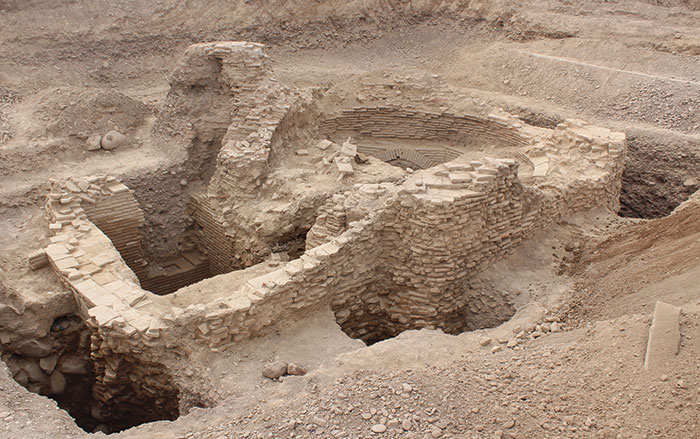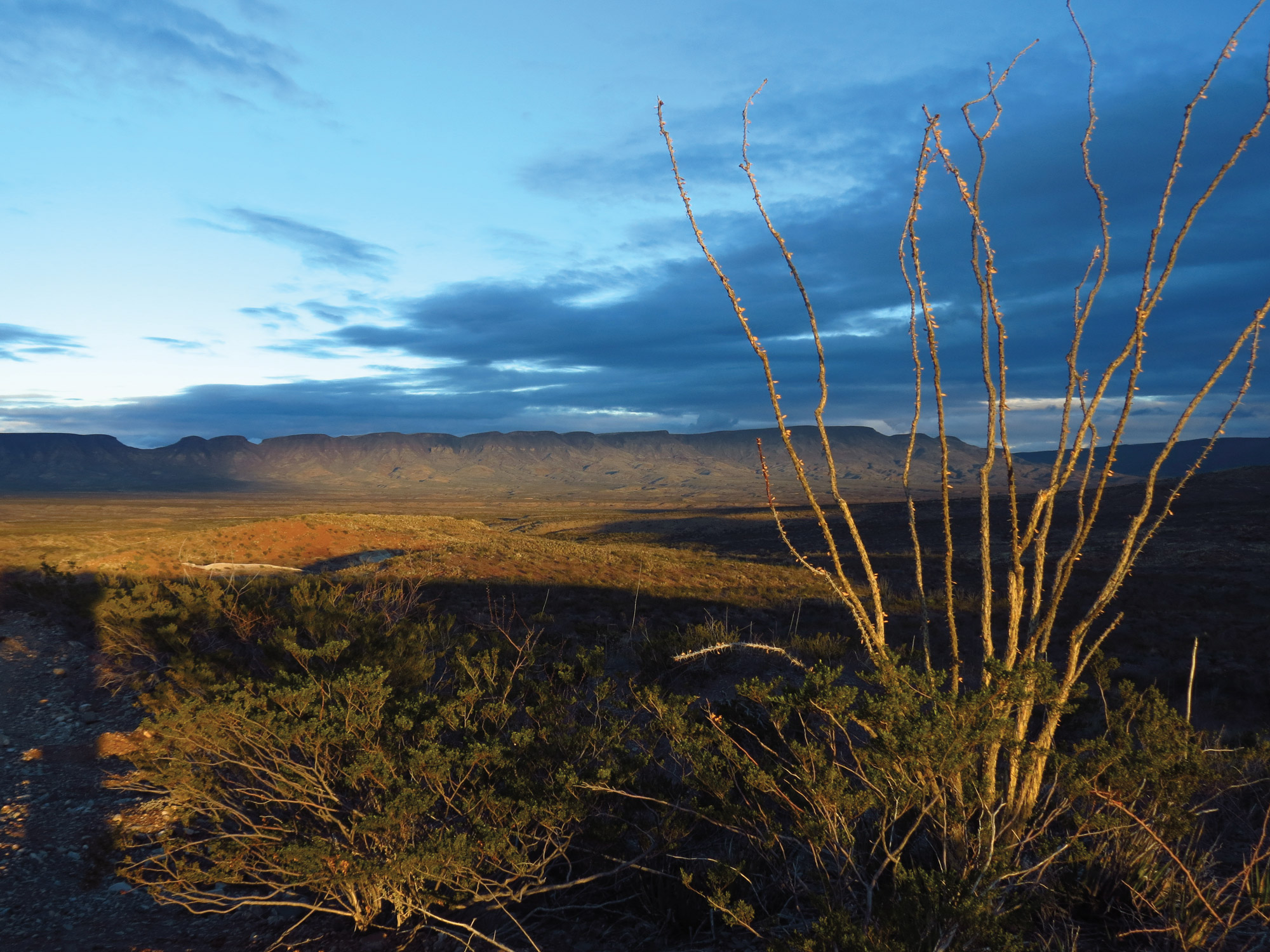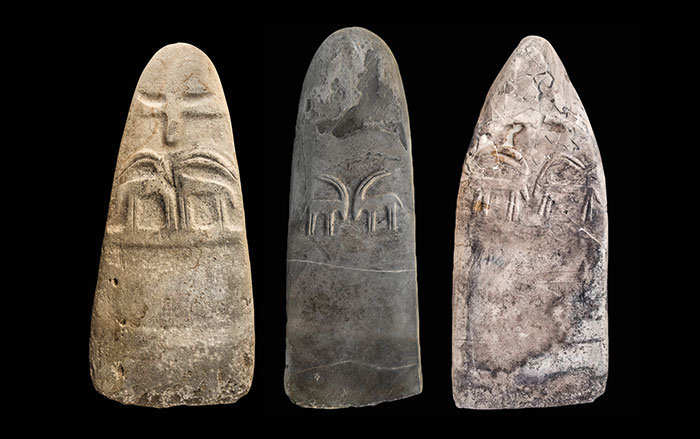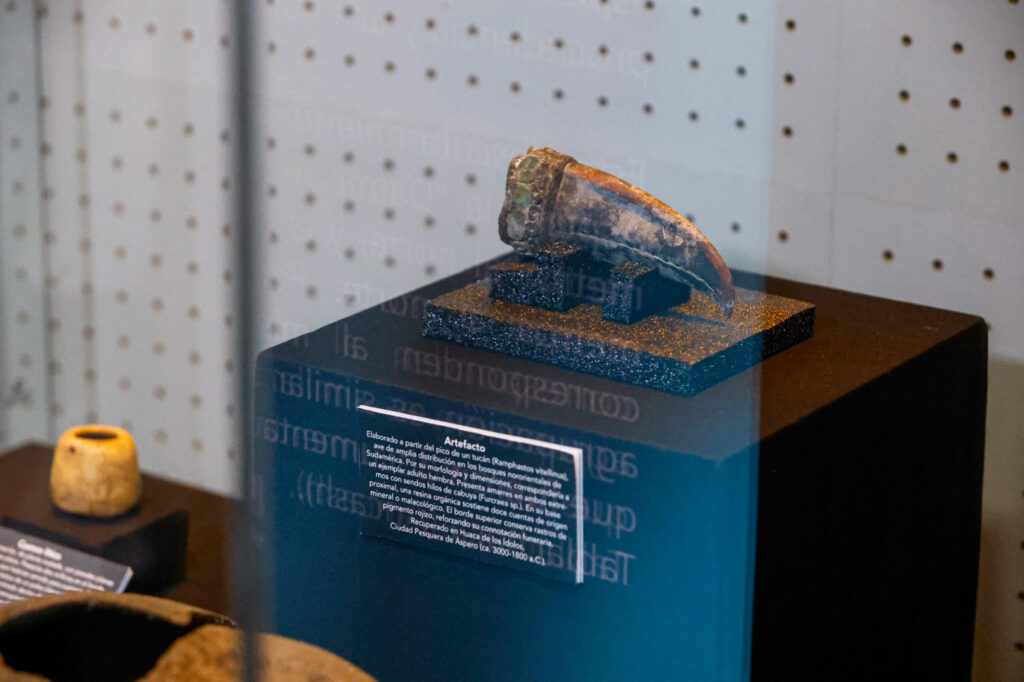
ÁSPERO, PERU—La Brújula Verde reports that archaeologists from the Peruvian Ministry of Culture have uncovered an extraordinary burial of a high-ranking woman at the site of Áspero, a fishing town of the Caral civilization (3000–1800 b.c.). The exceptionally well-preserved remains, which include hair, skin, and nails, were found within a public building known as Huaca de los Ídolos. The body of the woman, who died between the ages of 20 and 35, was carefully wrapped in cotton fabrics, reed mats, and a panel adorned with macaw feathers. The macaw panel is particularly noteworthy because it represents one of the oldest examples of feather art in the Andes. Experts noted that this discovery attests to the high level of specialized techniques achieved by the Caral civilization, as well as its ability to obtain exotic materials through trade. The deceased woman’s high standing within the Caral community was further underscored by a rich assemblage of funerary offerings, including reed baskets, an engraved needle, an Amazonian snail shell, weaving tools, and the beak of a toucan inlaid with green and brown beads. To read about another rich burial from Áspero, go to "Peruvian Woman of Means," one of ARCHAEOLOGY's Top 10 Discoveries of 2016.
